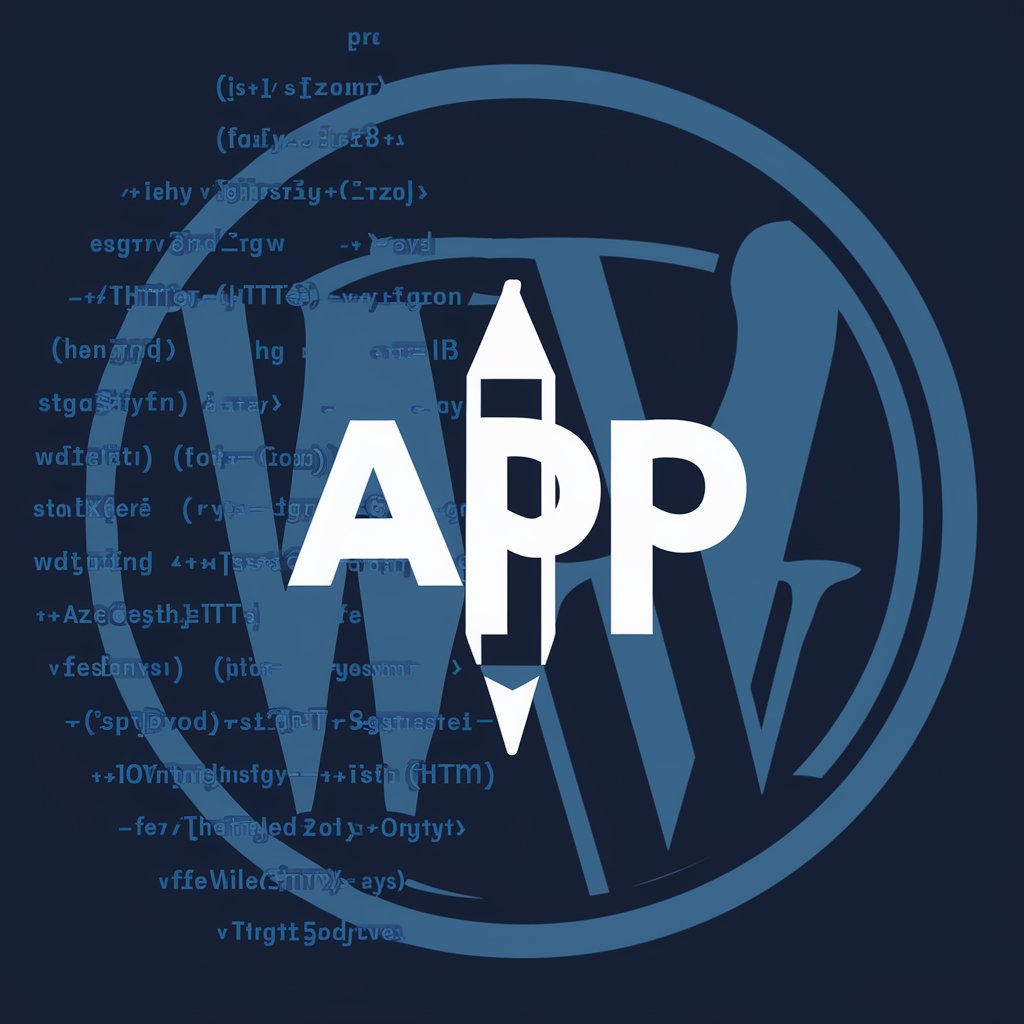
Article Post Processor v2 - WordPress Article Preparation

Welcome! Let's optimize your articles for WordPress.
Optimize HTML for WordPress with AI
Describe the process of uploading an HTML article to WordPress.
Explain the benefits of using AI tools for post-processing articles.
Outline the steps for inserting a table of contents in a WordPress article.
Discuss the importance of clean HTML in web publishing.
Get Embed Code
Overview of Article Post Processor v2
Article Post Processor v2 is a specialized tool designed to streamline and enhance the process of preparing and optimizing articles for publication on WordPress platforms. Its primary function is to automate the post-processing of HTML articles, ensuring they meet the specific formatting and SEO requirements of WordPress sites. The processor executes tasks such as cleaning up HTML code, optimizing metadata, and inserting specific WordPress tags and formats. It incorporates features like the 'clean_wp.py' script for cleaning articles and the 'read_cleaned_article.py' script for previewing the processed content, providing a seamless workflow for content creators, editors, and webmasters. By automating these tasks, Article Post Processor v2 significantly reduces manual editing time, improves content consistency, and ensures that articles are optimized for both search engines and user experience. Powered by ChatGPT-4o。

Key Functions and Use Cases
HTML Article Cleaning
Example
Automatically removes unnecessary tags, attributes, and styles from HTML files, making the code cleaner and more compliant with WordPress standards.
Scenario
A content creator uploads an article exported from a word processor, which includes a lot of inline styling and proprietary tags. Using the 'clean_wp.py' script, Article Post Processor v2 strips these extraneous elements, leaving behind clean HTML optimized for WordPress.
Inserting WordPress Tags
Example
Facilitates the insertion of WordPress-specific tags, such as 'more' tags for summarizing articles on the homepage.
Scenario
A user wants to ensure that only the first part of their article appears on the homepage, followed by a 'Read More' link. The processor can automatically insert the <!-- more --> tag at the appropriate place in the article.
Optimizing for SEO
Example
Adds meta tags and optimizes article headers for SEO, improving the article's visibility on search engines.
Scenario
Before uploading an article to WordPress, a user runs it through Article Post Processor v2, which ensures that the article has SEO-friendly titles, descriptions, and uses proper header tags, thereby enhancing its search engine rankings.
Table of Contents Insertion
Example
Automates the insertion of a table of contents based on article headers, enhancing navigability.
Scenario
For a long article, the processor can insert a dynamic table of contents right after the 'more' tag, making it easier for readers to jump to sections of interest.
Generating FAQ for Articles
Example
Generates a FAQ section in JSON-LD format for articles, improving structured data markup for SEO.
Scenario
After processing an article, the user wants to add a FAQ section to improve the article's SEO and provide quick answers. The processor can create this section based on predefined questions and answers, formatted in JSON-LD for better recognition by search engines.
Target User Groups
Content Creators and Bloggers
Individuals regularly publishing articles on WordPress who need to streamline their workflow and ensure their content is optimized for both readers and search engines.
SEO Specialists
Professionals focused on optimizing content for better search engine rankings, who would benefit from automated SEO tagging and structured data enhancements.
Webmasters and Website Administrators
Those responsible for the maintenance and content quality of WordPress sites, who require tools to automate and improve the consistency of site content.
Digital Marketing Professionals
Marketers who use content as a key part of their strategy and need efficient tools to ensure their articles are well-optimized for both user engagement and SEO.

How to Use Article Post Processor v2
Start with YesChat.ai
Access the Article Post Processor v2 on YesChat.ai for an easy, no-login trial experience, without the need for a ChatGPT Plus subscription.
Upload Your Article
Upload the HTML file of your article that you want to prepare for WordPress. Ensure the file format is correct for processing.
Specify Processing Options
Use the clean_wp.py script options to customize the cleaning process. This might include setting input and output file names.
Download Processed File
After processing, download the cleaned HTML file. This file will be optimized for WordPress uploading.
Review and Upload
Review the processed article for any final adjustments. Then, upload the content to your WordPress site, ensuring a smooth transition.
Try other advanced and practical GPTs
Bjørnson SEO 3.0
Empower Your Content with AI-Driven SEO

TeamUp4Content
Empowering Content with AI Insight

DigiTech Writer
Elevating Digital Presence with AI Ingenuity

自媒体运营专家
Empowering Your Content with AI

Java GUI 專案管理專家
Optimize Java GUI projects with AI-powered insights

Writer-Hand-Made
Empower Your Writing with AI

Dwell
Empower Your Projects with AI

Femme Fatale Mentor
Empower your allure with AI

Soccer
Transforming football analysis with AI.

Social Media GPT Obert
Elevate your social media game with AI.

Copywriter
Transform words into tangible impact.

SEO Paws Writer
Empowering dog-focused SEO with AI

Frequently Asked Questions about Article Post Processor v2
What is Article Post Processor v2?
It's a specialized tool designed for preparing HTML articles for WordPress by cleaning and optimizing the code, ensuring compatibility and enhanced SEO.
How does the cleaning process work?
The process removes unnecessary tags, formats the HTML to WordPress standards, and optimizes the structure for better readability and SEO performance.
Can I process multiple files at once?
Currently, the tool processes one file at a time to ensure each article receives focused optimization. Batch processing may be considered for future updates.
Is there a way to preview the changes?
After processing, users are encouraged to review the cleaned article before uploading it to WordPress to ensure the changes meet their expectations.
How do I insert a table of contents in my article?
Insert the HTML snippet for a table of contents right after the `<!-- more -->` tag in your article. This tool does not automatically generate a table of contents.






